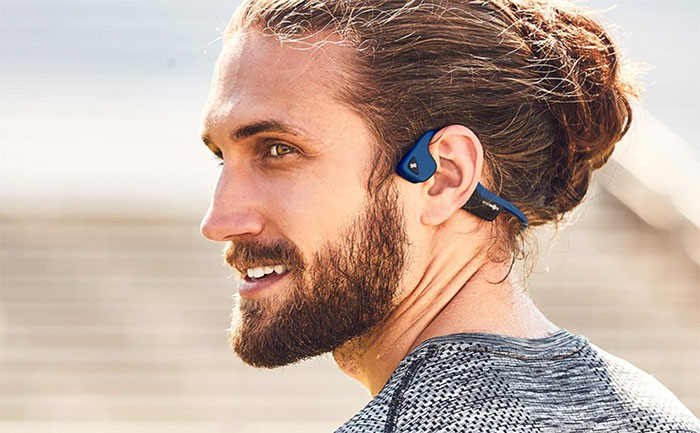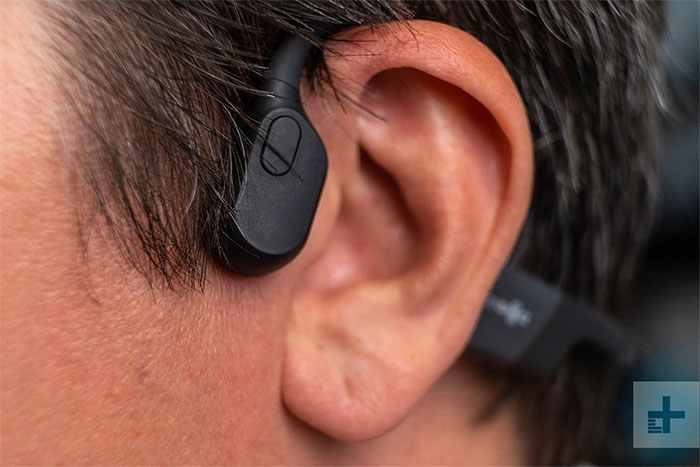Headphones transmit sound through bones: What is it and how it works?
True wireless headsets have almost dominated the wireless headphone market in recent years, but it is not the only wireless technology that has caught people's attention. The term " headset through the bone" is filling a niche segment, it is intended for athletes and more specifically it supports the sound recognition ability of the hearing impaired community.
What is a conduction through bone?

Headphones that transmit through the bone will vibrate through the jawbone, bypassing the middle ear.
Bone conduction headphones are the type of headset that is placed right on the listener's cheekbone. Instead of placing the eardrum away from the eardrum, air-conduction headphones vibrate through the jawbone, bypassing the middle ear. The technology originated in hearing aids and dates back to the 1920s, when Hugo Gernsback created the osophone - bone conduction hearing aids.
Today, the sound transmitted through bones has expanded beyond the world of medicine, and serves as a great tool for outdoor athletes.

This technology is derived from hearing aids.
Because this type of sound transmission will help the ears to be comfortable, from there, the listener will be aware and feel everything that is happening around them, this is extremely important when you run outside or walking. long road.
How does this headset work?
The headset conducts sound waves through the listener's skull bone by constantly vibrating the bone. More specifically, the sound travels through the skull straight to the cochlea, not through the eardrum, hammer bone (malleus), incus (small bone in the middle ear) or stapes (staple bone in the middle ear). The cochlea then moves the microscopic hairs (stereocilia) in Corti (a part of Cochlea - a component of the inner ear) related to hearing).

Sound travels through the skull straight to the cochlea.
This flow of motion initiates a series of chemical reactions that stimulate neurotransmitters to stimulate the auditory nerve. Once an impulse is fired from the auditory nerve, it travels to the brain and the brain interprets this information as sound.
This process also explains why you hear your voice sound more deeply than others. Because bone transmits lower frequencies better than high-frequency sounds, that's why I would be surprised to hear my voice sound more 'high-pitched' than I thought.

Bones transmit lower frequency sounds better than high frequency sounds.
Therefore, the sound that is transmitted through the bone differs from standard earphones because ordinary headphones broadcast sound directly into the ear canal. In both cases, the eardrum and other supporting mechanisms are basically involved in most of us. However, bone conduction headphones are a great option for anyone with hearing loss.
- Headphones not speakers
- Break up the headphones, this speaker will only 'sing' for you to listen to
- How to make the headset cord not tangled?
- The truth about the effect of headphones on hearing
- Decoding the reason why the headset is always tangled
- The reason you should not lend headphones to others
- Simple way to clean headphones
- Headphones regulate blood pressure
- Should headphones be worn at the time of take-off and landing?
- The scaryness of sound: saving people and destroying each other in a narrow way!
- American physicists have created an
- DoorBot - smart doorbell
 The US company is about to build a supersonic passenger plane of 6,000km / h
The US company is about to build a supersonic passenger plane of 6,000km / h Japan develops avatar robot as in fiction film
Japan develops avatar robot as in fiction film Australia tested the world's first mango picking robot
Australia tested the world's first mango picking robot America develops technology to separate water from animal waste
America develops technology to separate water from animal waste